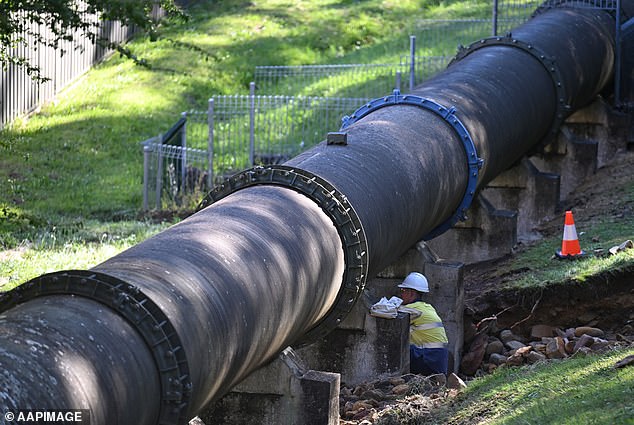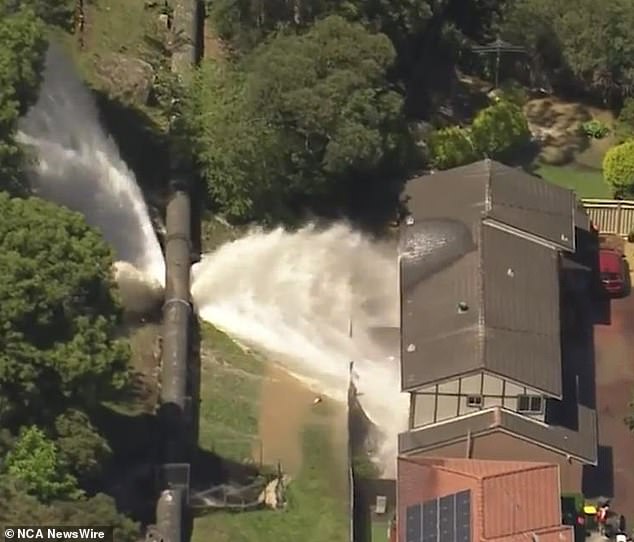Residents were forced to evacuate their homes after they were flooded when a torrent of water from a burst government pipe hit them.
The large water pipe connected to a major Sydney dam burst around midday on Friday in Como, in the city’s south, soaking nearby houses on Binya Place and Inelgah Road, which were flooded with water.
Fences were torn down, windows were broken and backyards were razed to the hardest hit properties.
One resident, Michelle Bunch, said she feared her home would end up flooded with major damage.
“It was banging against the windows, we thought they were going to break,” Ms Bunch said. nine news.
The pipeline maintained by Sydney Water connects to Woronora Dam, which supplies water to several suburbs south of the Georges River, including Sutherland, Cronulla, Engadine, Heathcote and Helensburg.
Like most water pipes in Australia’s largest cities, it has been around for more than half a century, having been installed in 1942. Researchers at the University of Technology Sydney say the average age of our water infrastructure is 80 years.
The large torrent burst into nearby houses on Binya Place and Inelgah Road, leaving them quickly inundated with water (pictured, water flooding a house near the pipeline).
The flood caused part of the roof of Mrs Bunch’s property to collapse and destroyed some of the family’s belongings.
The destruction has forced them to abandon their home and they will have to find alternative accommodation.
“It was quite scary,” Mrs Bunch said.
A Sydney Water spokeswoman told Daily Mail Australia that agency crews isolated the main pipe and repairs are currently underway to fix the pipe.
“Network technicians were on site assessing a leak in the main when it burst,” the spokeswoman said.
‘Customer advocates are on site working with affected customers and assessing damage.
“Sydney Water apologizes for the inconvenience caused to our customers.”
New South Wales State Emergency Services said some homes had been severely affected by water damage, while others suffered only superficial damage.
Australia’s 140,000 kilometers of water pipes are on average 80 years old and the aging network is prone to failure.
Professor Fang Chen and Associate Professor Yang Wang lead an award-winning team of scientists at the UTS Data Science Institute who are investigating ways to identify potential breaks before they happen.
“Just like a human octogenarian, this infrastructure needs closer monitoring and ‘preventive medicine’ to keep it functioning,” Professor Feng said.
Working with more than 30 utilities in Australia and internationally, they have examined 1 million pipe failure records for 10 million pipelines over the past decade.
The team has developed a computer model to predict where failures are most likely to occur before the infrastructure fails.

Sydney Water crews and technicians have isolated the main pipe and repairs are currently being carried out to repair the pipe (pictured, crews fixing the broken water pipe at the burst pipe)
On Friday, residents reportedly reported to Sydney Water around 6am that a hissing sound was coming from the pipe before it burst.
The agency inspected the site at 7.30am and it is understood they fixed the problem.
However, the pipeline burst open just hours later.
The cause of the breakup has not yet been confirmed.
Sydney Water is the main supplier of drinking water in the Harbor City and the agency serves five million customers.


